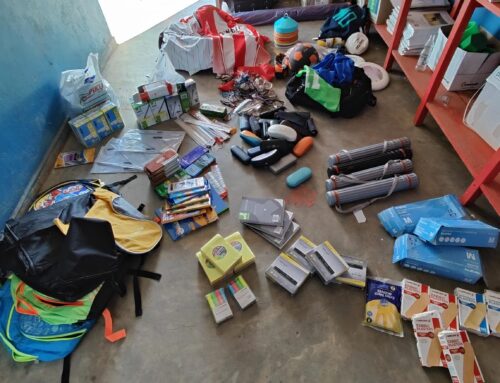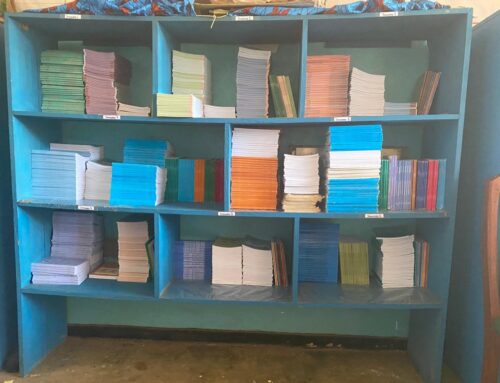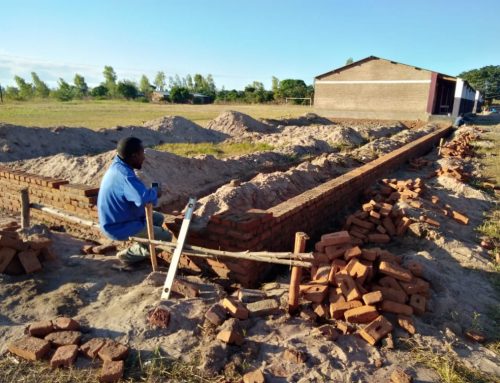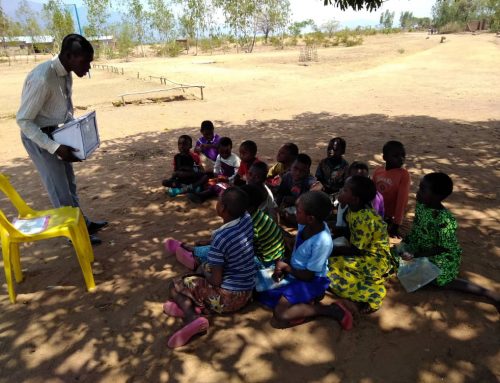Matandani School is in an area that is affected greatly by poverty. The World Food Programme are a major organisation in the area that help local government schools by offering a food programme to help feed the children and give them at least one good meal a day.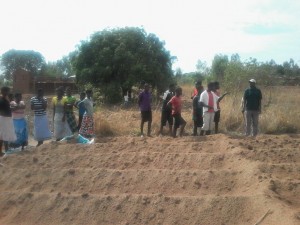
The idea of a guaranteed meal also helps attract children to school and gives the family that extra incentive to send their children there. Malawi, especially rural Malawi is not like Ireland where it is a law for children to go to school everyday. It is still a new concept for families to send all their children to school.
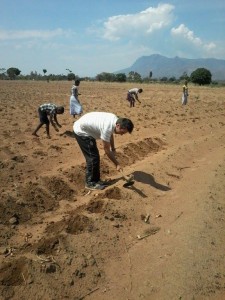 Unfortunately though, Matandani is two kilometres outside the designated area that the World Food programme works within. During my time here in Malawi, I have asked repeatedly if Matandani can be added to the list but it hasn’t been possible. I then asked if the government are doing anything else to help schools and was told that this year, the government decided to try out a new pilot programme called the Home-grown School Meals Programme.
Unfortunately though, Matandani is two kilometres outside the designated area that the World Food programme works within. During my time here in Malawi, I have asked repeatedly if Matandani can be added to the list but it hasn’t been possible. I then asked if the government are doing anything else to help schools and was told that this year, the government decided to try out a new pilot programme called the Home-grown School Meals Programme.
The local government had picked 27 schools for this programme but again, Matandani was not one of them. After three weeks of continuously asking for Matandani to be considered, I was told that because one of the other schools had to drop out, and thanks to my eagerness, Matandani would take their place.
The school had to provide a hectare of land (roughly the same size of a football pitch) to grow maize for the Food Programme. The Deputy Head teacher Kenneth, the local chief and I located suitable land only 200 meters from the school and the rent on the land was negotiated down to 22,000 kwacha (44€) for the year. I paid this for the current school year to help start the programme but the school has a year to put a plan in place to raise this money itself and make this programme sustainable.
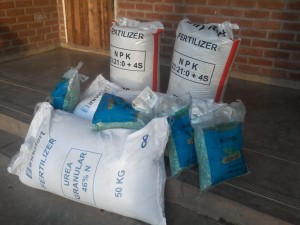 As part of the programme, the government have delivered four 70kg bags of fertiliser and four 5kg bags of good quality seeds to plant. It is hoped that after harvesting the maize around May/June we will have between 60-75 bags of maize. One bag of maize feeds around 250 children.
As part of the programme, the government have delivered four 70kg bags of fertiliser and four 5kg bags of good quality seeds to plant. It is hoped that after harvesting the maize around May/June we will have between 60-75 bags of maize. One bag of maize feeds around 250 children.
This is the start of the project and the Government want to maintain the pilot programme of 27 schools and try and increase the amount of maize grown each year till these schools become self sufficient and are able to feed the pupils at least 2-3 meals a week.
This has the potential to really make a huge difference to the children in the area as it will help with school attendance. From what I have noticed already, a lot of children coming to school do not have or bring any lunch.
Can you imagine not bringing or having lunch? Think how hungry and weak you’d feel.
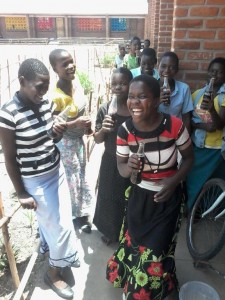
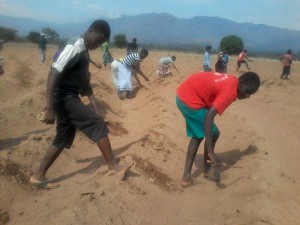 When it came to planting the field, ALL of standard 8 came to school with their ‘hoes’ (African spades) and it took all the children, the two standard 8 teachers and myself nearly three hours to plant this enormous garden.
When it came to planting the field, ALL of standard 8 came to school with their ‘hoes’ (African spades) and it took all the children, the two standard 8 teachers and myself nearly three hours to plant this enormous garden.
The children were rewarded for their hard work with a cold drink of coke or fanta! There is still a lot of the hard work to come over the next few months as the garden will need to be weeded quite often to let the maize grow, and then will come the harvest.
I feel this is a very important step for Matandani and I hope we can support this project over the next couple of years.
—————————————————————————-
Check out the video below of a group of STD 8 children planting the Maize seeds in the New School Garden! They had a system with a group of 4 … one measuring the distance between the holes using a stick, next person digs the hole using a hoe or big stick, next two seeds are dropped into each hole and finally the last person covers up the hole with the soil. They were fast!
Planting Video – Matandani from Scoil Bhride on Vimeo.


